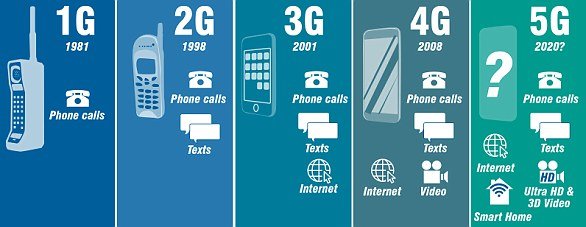China kick-starts development of 6G technology less than a week after rolling out its superfast 5G network
- China has officially begun developing the next-generation internet connection
- Beijing has drafted 37 experts from universities and institutions for the project
- The news was announced during a 6G launching ceremony in Beijing on Sunday
- China’s state-owned telecom carriers launched their 5G data plans last week
China has officially begun the research and development of 6G technology.
The news came less than a week after the country rolled out its superfast 5G network.
The country’s Technology Bureau has formally set up a team of experts to work on the next-generation mobile internet connection, state media said today.
A total of 37 telecommunication specialists drawn from universities, institutions and corporations are on the panel, which is tasked with laying out the development of 6G and proving the scientific feasibility of it.

The news was announced during a 6G launch ceremony in Beijing on Sunday, according to a report by Chinanews.com.
Wang Xi, deputy minister of the Technology Bureau, said at the conference that the bureau was set to work with the experts to design a specific research plan for 6G and carry out preliminary research.
China’s three state-owned telecommunication carriers – China Mobile, China Unicom and China Telecom – launched their 5G data plans just last Thursday.
The country is due to activate more than 130,000 5G base stations by the end of this year to support the network, which is one of the world’s largest 5G deployments.
Chinese engineers have already built a ‘5G smart town’ near Shanghai, where residents will be able to download TV series, movies or games at an impressive speed of 1.7GB per second.
5G signal is sent out to the nooks and crannies of the 27-square-mile town of Wuzhen by more than 140 transmitters, which went into service recently.
The country is also on its way to completing a 5G-equipped high-speed train station, in collaboration with Chinese tech giant Huawei.
The ‘superfast’ 5G network will be fitted to the existing Shanghai Hongqiao Railway Station, which is one of Asia’s busiest traffic hubs and handles some 60 million passengers a year.
Visitors to the station will be able to download a 2GB high-definition film in less than 20 seconds, according to Huawei.
In comparison, it would take three minutes and 20 seconds to download the same film on a standard 4G network.
WHAT IS 5G AND WHAT DOES IT DO?
Potential uses for 5g include:
- Simultaneous translation of several languages in a party conference call
- Self-driving cars can stream movies, music and navigation information from the cloud
- A full-length 8GB film can be downloaded in six seconds.
5G is expected to be so quick and efficient it is possible it could start the end of wired connections.
By the end of 2020, industry estimates claim 50 billion devices will be connected to 5G.

The evolution of from 1G to 5G. The predicted speed of 5G is more than 1Gbps – 1,000 times greater than the existing speed of 4G and could be implemented in laptops of the future










